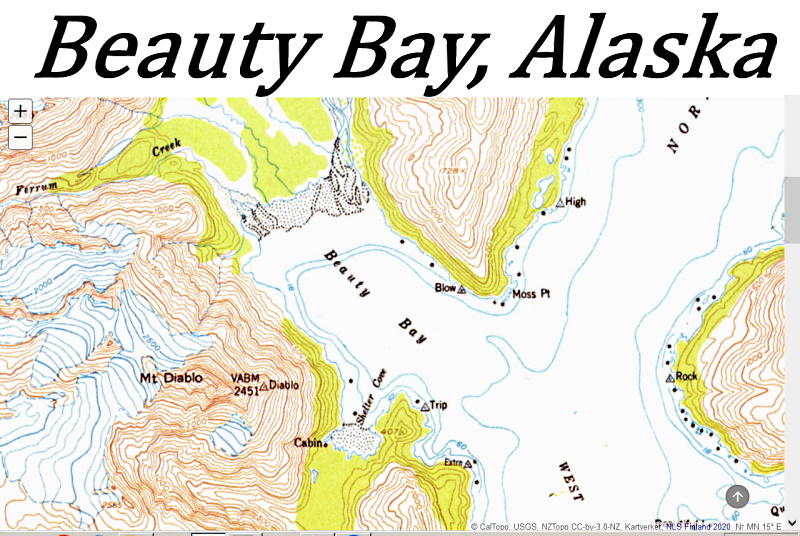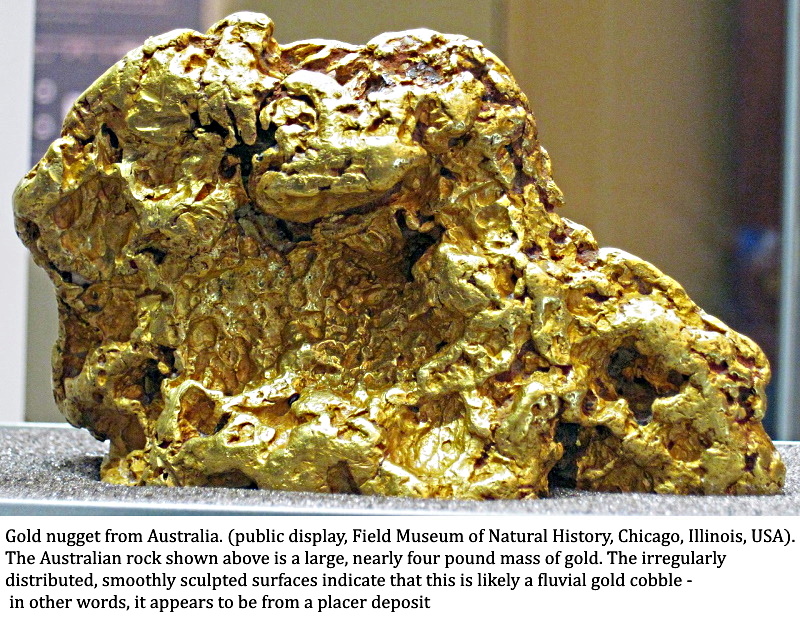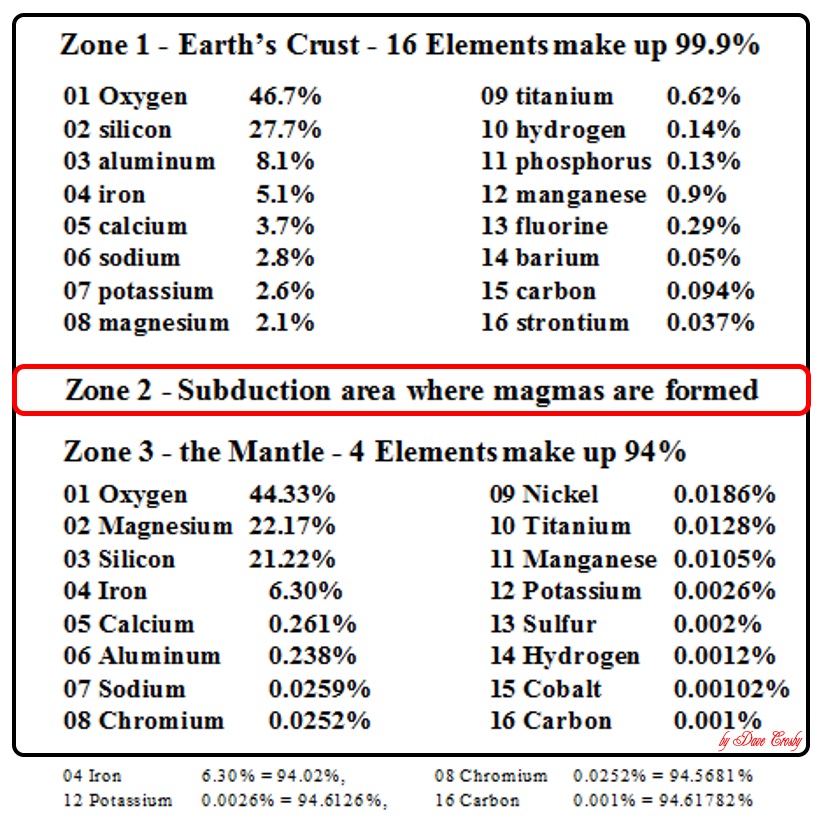Post by 1dave on Mar 17, 2023 8:39:29 GMT -5
I once (1960's) had an ounce - 12 nuggets - of gold that had been hand panned from Beauty Bay Alaska by a friend, Kent Cox. They looked just like the pieces you get when you pour molten metal into water.



When I had them refined, Southwest Refineries nicked me heavily because of the large amount of Rare Earth Elements mixed in them!
Some Gold Facts:
Density (g cm−3) 19.3
Melting point 1064.18°C, 1947.52°F, 1337.33 K
Boiling point 2836°C, 5137°F, 3109 K
Gold has a Boiling Point of 2836°C. At 2836°C it starts turning into a Gas.
Below that point it condenses back into a liquid.
Gold can only come into existence during the supernovae of very large stars.
The temperature in a supernova can reach 1,000,000,000 degrees Celsius.
At those temperatures gold isn't even a gas. It is a plasma!
upload.wikimedia.org/wikipedia/commons/d/d2/Gold-210796.jpg

The above image is from Wikipedia Commons. What do you see on every original surface?

Those little spheres are from condensing gold mist!
Gold is soft and easily worn away. Look closely at the above nuggets. Imagine them as meteors encountering the earth's atmosphere. Were the spheres there before - or after?
They landed on land, or in water. Were the spheres there before - or after?

The explanation is someone's best guess. If you look close - yes, there are some tiny little gold spheres . . .
en.wikipedia.org/wiki/Gold_in_California
They have concocted quite a story. Lots of interesting guesses, BUT would those little spheres have survived all that?
And those gold nuggets had those tiny spheres. icon_think



When I had them refined, Southwest Refineries nicked me heavily because of the large amount of Rare Earth Elements mixed in them!
THINK ABOUT THAT.
Some Gold Facts:
Density (g cm−3) 19.3
Melting point 1064.18°C, 1947.52°F, 1337.33 K
Boiling point 2836°C, 5137°F, 3109 K
Gold has a Boiling Point of 2836°C. At 2836°C it starts turning into a Gas.
Below that point it condenses back into a liquid.
Gold can only come into existence during the supernovae of very large stars.
The temperature in a supernova can reach 1,000,000,000 degrees Celsius.
At those temperatures gold isn't even a gas. It is a plasma!
upload.wikimedia.org/wikipedia/commons/d/d2/Gold-210796.jpg

The above image is from Wikipedia Commons. What do you see on every original surface?

Those little spheres are from condensing gold mist!
Where and When did that happen?
Gold is soft and easily worn away. Look closely at the above nuggets. Imagine them as meteors encountering the earth's atmosphere. Were the spheres there before - or after?
They landed on land, or in water. Were the spheres there before - or after?

The explanation is someone's best guess. If you look close - yes, there are some tiny little gold spheres . . .
en.wikipedia.org/wiki/Gold_in_California
Gold became highly concentrated in California, United States as the result of global forces operating over hundreds of millions of years. Volcanoes, tectonic plates and erosion all combined to concentrate billions of dollars' worth of gold in the mountains of California. During the California Gold Rush, gold-seekers known as "Forty-Niners" retrieved this gold, at first using simple techniques, and then developing more sophisticated techniques, which spread around the world.
Geology
Gold-bearing magma rising after being subducted under the continental crust.
Geologic evidence indicates that over a span of at least 400 million years, gold that had been widely dispersed in the Earth's crust became more concentrated by geologic actions into the gold-bearing regions of California. Only gold that is concentrated can be economically recovered. Some 400 million years ago, rocks that would be accreted onto western North America to build California lay at the bottom of a large sea. Subsea volcanoes deposited lava and minerals (including gold) onto the sea floor; sometimes enough that islands were created.[1] Between 400 million and 200 million years ago, geologic movement forced the sea floor and these volcanic islands and deposits eastwards, colliding with the North American plate, which was moving westwards.[2]
Beginning about 200 million years ago, tectonic pressure forced the sea floor beneath the American continental mass.[3] As it sank, or subducted, beneath the western margin of the North American plate portions of the sea floor and overlying continental crust heated and melted, producing large molten masses (magma). Being lighter and hotter than the ancient continental crust above it, this magma forced its way upward, cooling as it rose[4] to become the granite rock found throughout the Sierra Nevada and other mountains in California today.[5] As the hot magma cooled, solidified, and came in contact with water, minerals with similar melting temperatures tended to concentrate together.[5] As the magma solidified, gold became concentrated within hydrous silica solutions and was deposited within veins of quartz.[4][6]
Goldfields in the mountains of northern and central California.
As the Sierra Nevada and other mountains in California were forced upwards by the actions of tectonic plates, the solidified minerals and rocks were raised to the surface and subjected to erosion.[7] The surrounding rock then weathered and crumbled, and the exposed gold and other materials were carried downstream by water. Because gold is denser than almost all other minerals, this process further concentrated the gold as it sank, and pockets of gold gathered in quiet gravel beds along the sides of old rivers and streams.[8]
The California mountains rose and shifted several times within the last fifty million years, and each time, old streambeds moved and were dried out, leaving the deposits of gold resting within the ancient gravel beds where the gold had been collecting.[9] Newer rivers and streams then developed, and some of these cut through the old channels, carrying the gold into still larger concentrations.[9]
The Forty-Niners of the California Gold Rush first focused their efforts on these deposits of gold, which had been gathered in the gravel beds by hundreds of millions of years of geologic action.
Geology
Gold-bearing magma rising after being subducted under the continental crust.
Geologic evidence indicates that over a span of at least 400 million years, gold that had been widely dispersed in the Earth's crust became more concentrated by geologic actions into the gold-bearing regions of California. Only gold that is concentrated can be economically recovered. Some 400 million years ago, rocks that would be accreted onto western North America to build California lay at the bottom of a large sea. Subsea volcanoes deposited lava and minerals (including gold) onto the sea floor; sometimes enough that islands were created.[1] Between 400 million and 200 million years ago, geologic movement forced the sea floor and these volcanic islands and deposits eastwards, colliding with the North American plate, which was moving westwards.[2]
Beginning about 200 million years ago, tectonic pressure forced the sea floor beneath the American continental mass.[3] As it sank, or subducted, beneath the western margin of the North American plate portions of the sea floor and overlying continental crust heated and melted, producing large molten masses (magma). Being lighter and hotter than the ancient continental crust above it, this magma forced its way upward, cooling as it rose[4] to become the granite rock found throughout the Sierra Nevada and other mountains in California today.[5] As the hot magma cooled, solidified, and came in contact with water, minerals with similar melting temperatures tended to concentrate together.[5] As the magma solidified, gold became concentrated within hydrous silica solutions and was deposited within veins of quartz.[4][6]
Goldfields in the mountains of northern and central California.
As the Sierra Nevada and other mountains in California were forced upwards by the actions of tectonic plates, the solidified minerals and rocks were raised to the surface and subjected to erosion.[7] The surrounding rock then weathered and crumbled, and the exposed gold and other materials were carried downstream by water. Because gold is denser than almost all other minerals, this process further concentrated the gold as it sank, and pockets of gold gathered in quiet gravel beds along the sides of old rivers and streams.[8]
The California mountains rose and shifted several times within the last fifty million years, and each time, old streambeds moved and were dried out, leaving the deposits of gold resting within the ancient gravel beds where the gold had been collecting.[9] Newer rivers and streams then developed, and some of these cut through the old channels, carrying the gold into still larger concentrations.[9]
The Forty-Niners of the California Gold Rush first focused their efforts on these deposits of gold, which had been gathered in the gravel beds by hundreds of millions of years of geologic action.
They have concocted quite a story. Lots of interesting guesses, BUT would those little spheres have survived all that?
“Gold was discovered in California as early as March 9, 1842, at Rancho San Francisco, in the mountains north of present-day Los Angeles. Californian native Francisco Lopez was searching for stray horses and stopped on the bank of a small creek (in today's Placerita Canyon), about 3 miles (4.8 km) east of present-day Newhall, California, and about 35 miles (56 km) northwest of L.A. While the horses grazed, Lopez dug up some wild onions and found a small gold nugget in the roots among the bulbs. He looked further and found more gold.[3] Lopez took the gold to authorities who confirmed its worth. Lopez and others began to search for other streambeds with gold deposits in the area. They found several in the northeastern section of the forest, within present-day Ventura County.[3] In November, some of the gold was sent to the U.S. Mint, although otherwise attracted little notice.[4][5] In 1843, Lopez found gold in San Feliciano Canyon near his first discovery. Mexican miners from Sonora worked the placer deposits until 1846.[3] Minor finds of gold in California were also made by Mission Indians prior to 1848. The friars instructed them to keep its location secret to avoid a gold rush.[6]
And those gold nuggets had those tiny spheres. icon_think














